The Midden is the Resource Management Newsletter of Great Basin National Park, published each summer and winter. Find out the latest going on at Great Basin National Park, Nevada in resource management and research. The Midden - Great Basin National Park: Vol. 17, No. 2, Winter 2017.
-
Great Basin National Park
Article 1: Lichen BioBlitz Adds New Insights into Distribution
The Lichen BioBlitz held July 17-19, 2017 at Great Basin National Park (GBNP) attracted roughly 50 participants. In addition to a handful of professional biologists who specialize in lichens, the participants came from a wide range of backgrounds and included some youth and a few local residents. Most of the participants had little or no prior knowledge of lichens but all brought an enthusiasm for natural history and an interest in learning. Read more
-
Great Basin National Park
Article 2: Red Fox (Vulpes vulpes) in Great Basin National Park
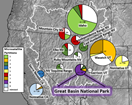
An evolutionarily distinct lineage of red fox native to the Western United States occurred historically in isolated populations scattered among high-elevation sky islands of the Great Basin and surrounding mountain ranges. These Pleistocene relictual populations are disappearing as their subalpine habitats are lost to climate change and other anthropogenic causes. Read more
-
Great Basin National Park
Article 3: Upper Lehman Wetlands Restoration
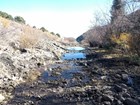
The Upper Lehman Campground was developed in the 1960s by the U.S. Forest Service. The area of the northern campground access road was originally a wetland complex consisting of springs, seeps, wet meadows, and a braided riparian stream system. A road was graded in, covered with several feet of road base, and then paved. To redirect water from both the road and nearby campsites, ditches were constructed to drain wet areas and channel water through five culverts. Read more
-
Great Basin National Park
Article 4: Rattlesnakes Emerging Earlier Due to Warmer Temperatures

We conducted a 17-year study of Great Basin rattlesnakes (Crotalus lutosus) at four communal hibernacula in eastern Nevada and western Utah. Surveys were conducted during spring emergence (March, April, and May) from 2000 to 2017. Hibernacula were visited approximately 10 times each year. We defined peak emergence as the date on which the greatest number of snakes were observed at a hibernaculum (sensu Brown 2008). Read more
-
Great Basin National Park
Article 5: Monitoring & Treatment of Invasive Plants at Water Systems
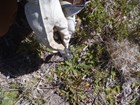
At Great Basin National Park, four meadow complexes provide drinking water to visitors, park residences, and campgrounds. Wet meadows make up only 0.1% of the park, varying in elevations from 7,200 to 10,300 feet. These mesic habitat types seem more susceptible to invasion by non-native plant species due to available water and soil conditions. Invasive plants can alter fire regimes and outcompete native plant populations that are already adapted to the soil. Read more
-
Great Basin National Park
Article 6: Bats in the Basin and Beyond
Great Basin National Park’s Southern Nevada Public Land Management Act funded project, “Can land managers prevent the ‘inevitable collapse’ of bats in the western US?” has just finished its first of five field seasons. The overarching goals of the project are to locate and protect important bat roosts, derive demographic information about local bat populations, and educate and engage the public in bat conservation. Data gathered will help managers both locally and regionally. Read more
-
Great Basin National Park
Article 7: Forgotten Grasslands: Basin Wildrye
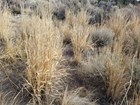
Basin wildrye (Leymus cinereus) is an easy-to-recognize grass. It stands up to six feet tall, and early pioneers that arrived in Snake Valley commented on how it rose up to their horses’ bellies. It was an abundant grass, but that is no longer the case. Read more
-
Great Basin National Park
Article 8: Save the Date! Beetle BioBlitz in 2018
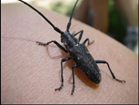
Join us for our tenth annual BioBlitz! We started with beetles in our first BioBlitz, and we’re going to return to them during a different part of the year to see what else lives in the park. Nevada State Entomologist Jeff Knight, along with other experts, will help guide citizen scientists during this fun, science-filled three-day event. Read more


